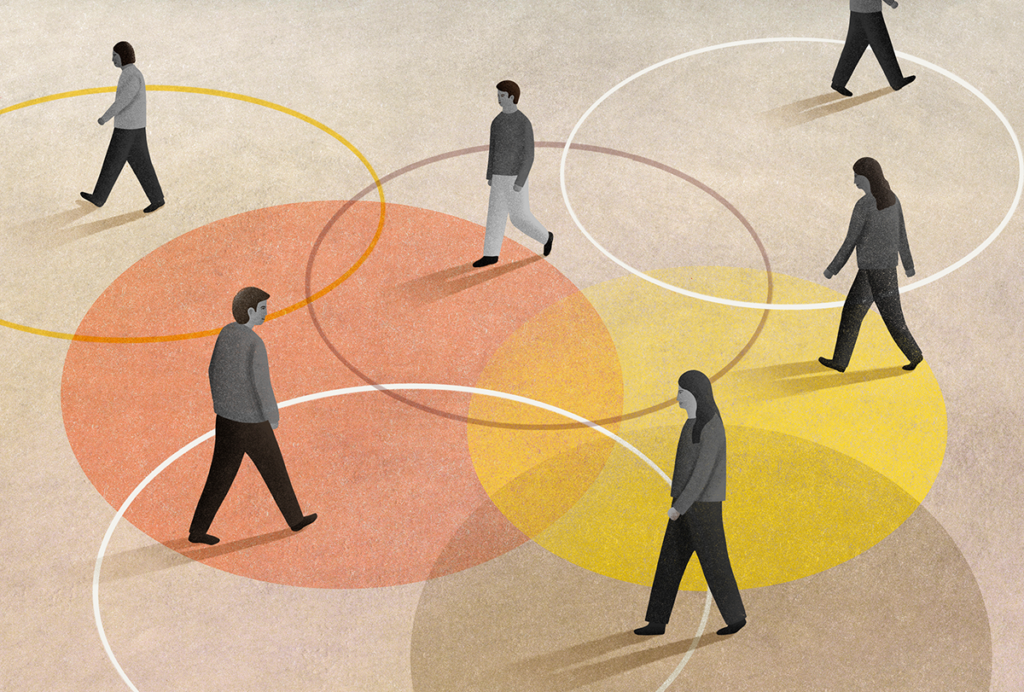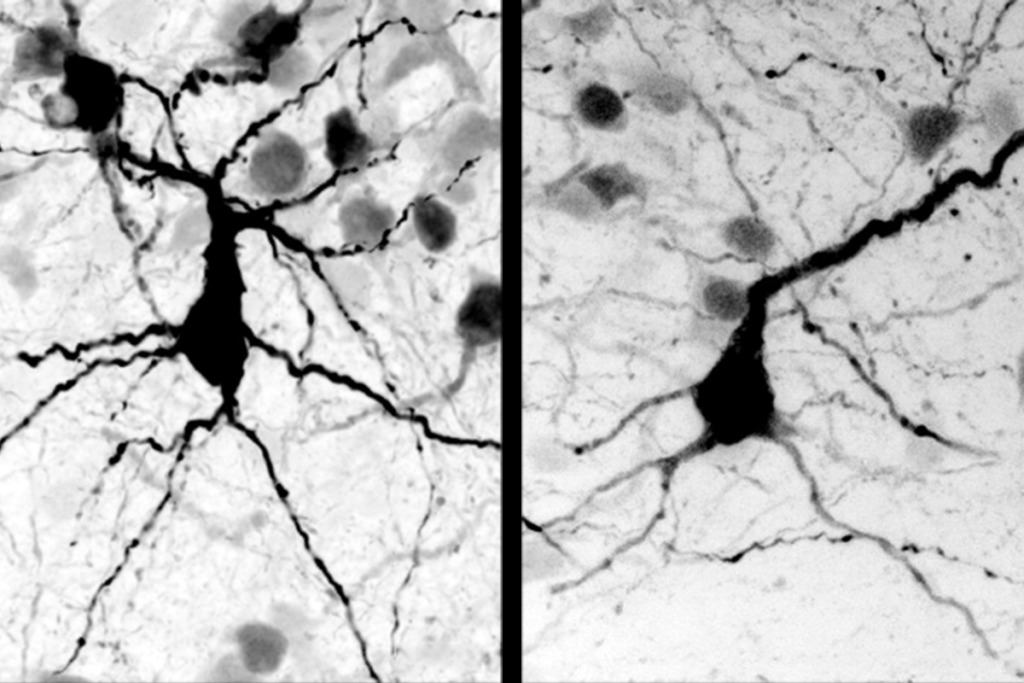This is a story of autism in small-town America
Rural living can be wonderful: community, friendly faces, a slower pace of life. But when there’s autism in the family, it can be tough.
M
orning circle is off to a rough start at LilyPad Learning Center. On a bright Monday in September, in the large preschool classroom in Madrid, Iowa, 15 children sit cross-legged, patiently waiting their turn to report whether they watched football or read books over the weekend.A wiry 4-year-old named Izzy Green dashes across the room, her long black hair trailing behind her, and runs between two of the seated children. She bursts into the center of the circle, plops herself onto the floor and curls into a ball, moaning and clutching a little blanket. Small heads turn as Izzy rolls across the carpet and leaps to her feet. She retreats across the room, scoops up a book and hurls it past a teacher.
A teacher’s assistant escorts Izzy back to the group and tries to coax her into a yellow plastic chair at the edge of the circle. But the girl shrieks and flails her arms at the assistant, and tumbles back down to the floor. As she kicks her legs, her hands connect with a basket of toys. Plastic dinosaurs fly across the room. All eyes are on Izzy.
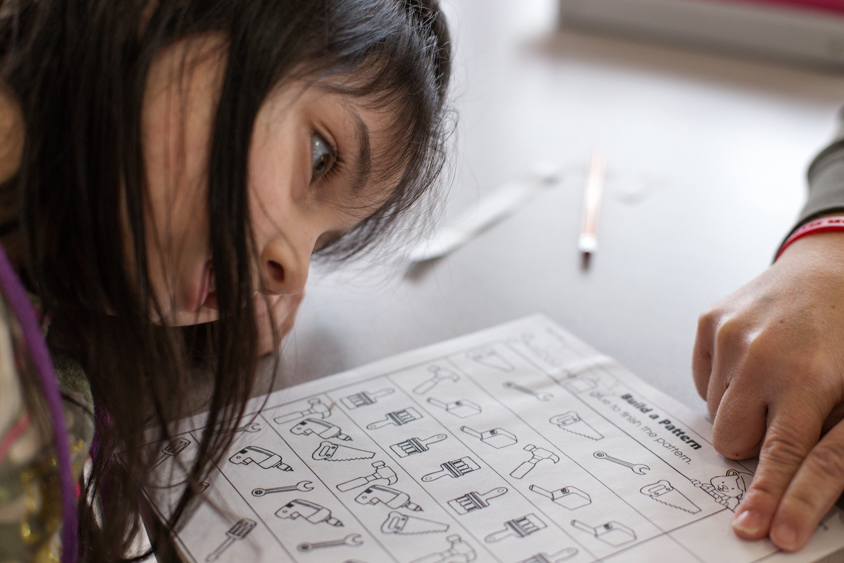
All photography by KC McGinnis
Izzy was diagnosed with autism at age 3. Until this past July, she spent her weekdays at a home daycare and a small preschool where she was surrounded by familiar faces — people who knew her quirks. But that preschool closed down. Enrolling at LilyPad has been “a rude awakening,” says Izzy’s mother, Victoria Green, whose straight brown hair and athletic build mirror her no-nonsense personality. Trouble started the first day. The teachers “wanted Izzy to draw on a small piece of paper, but Izzy wanted to draw on the large paper on the easel,” Victoria says. “So a teacher stood in front of the easel to block it, and Izzy hit the teacher.” The teachers told Victoria that Izzy was “aggressive.” Victoria retorted that the teachers should pick their battles. After that, the relationship was “tense,” she says.
Izzy’s teachers have looked for some trick to prevent the girl from melting down, running away and throwing toys — and, during recess, even rocks. So far, they’ve come up with two ideas: the yellow plastic chair and a repertoire of staccato commands that usher Izzy through the day. “Izzy, come” or “Izzy, sit down.” Everyone at LilyPad, even the youngest students, know the chair is Izzy’s home base — a place she retreats to throughout her morning. Izzy too seems to recognize the chair as her own, although it doesn’t stave off her tantrums.
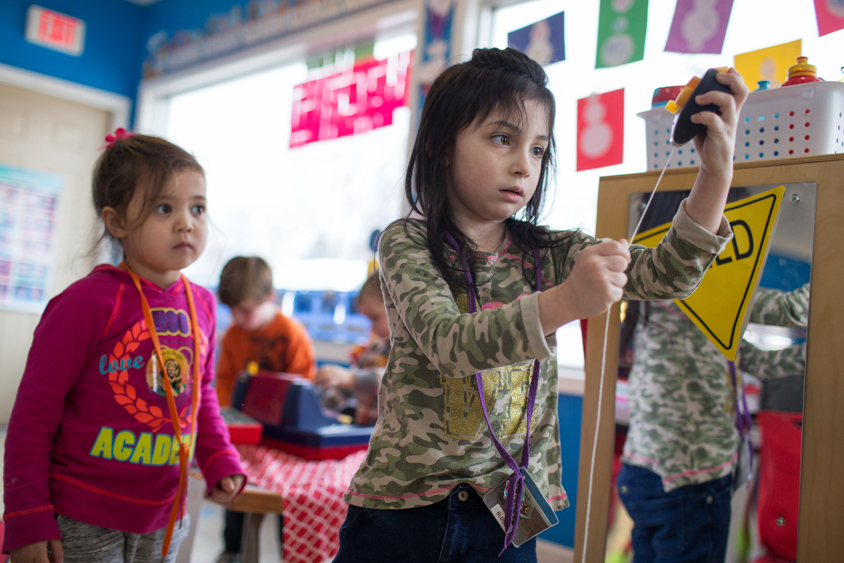
Her parents face their own struggles at home. Izzy tends to bolt, as she did once when her father, Shane Green, stepped outside their home for a minute to take out the trash. Date nights are out of the question, because the couple has trouble trusting a babysitter to prevent Izzy from running away or getting hurt.
In a larger town, they might have been able to find a counselor trained in applied behavioral analysis (ABA), the intensive therapy that is usually recommended for children with severe behavior problems. But their community of 2,500 people has no qualified ABA providers — either state-funded or private — and they live hours away from the nearest one.
Many families in other parts of rural America face similar struggles, says Alacia Stainbrook, a behavior analyst and coordinator of an early intervention program at Vanderbilt University Medical Center in Nashville, Tennessee. “The farther you are from a major metropolitan city, the less likely you are to find a behavioral analyst,” she says. “It’s not feasible to drive two hours for a 30-minute therapy session and then back home again.”
In Iowa, more than 80 percent of the ABA providers operate in cities and suburbs — but about half of the state’s population, including Izzy and many of the 8,000 other children with autism, reside in rural areas like Madrid.
Like many rural families with children who have special needs, Victoria and Shane have mixed feelings about raising Izzy here. Central Iowa is breathtakingly beautiful and miles away from the crime and bustle of urban life. It’s liberating, says Victoria. But it’s also confining. Families here have far fewer choices — for schools, therapists, pediatricians and playmates — than they would in a city.
Two years ago, when Victoria heard about a clinical trial that would train parents to use an ABA-like intervention at home, she immediately signed up. The trial, which uses video conferencing to virtually transport researchers into the family home, has offered a partial solution to the problem of isolation.
For Izzy, the approach has been a success. Her tantrums have dwindled from 20 minutes each to less than 5, for example, and she has learned to use words to communicate her wants and needs to her parents. But it hasn’t changed her life at school, and Izzy and her teachers continue to struggle.
”“Everyone here knows Izzy. If she escaped and was out walking by herself, someone would stop and get her.” Victoria Green
Change of pace:
O
n the map, Madrid, Iowa — pronounced Mad-rid, not like the city in Spain — is a small dot in a sea of white space. Zoom in, and the dot is home to two gasoline stations, a school and a small grocery store, all surrounded by a blanket of cornfields.Most people live here because they never left. A few arrive from cities like Chicago, a five-hour drive away, searching for a simpler life. Victoria and Shane came here from a suburb of Madison, Wisconsin, four years ago as new parents, after they’d both lost their jobs — and then their home — during the recession. They moved to Madrid for a fresh start and to be closer to family. They were hoping to raise their children among neighbors who watch out for one another.
Back then, the couple had no idea that their baby girl had autism. Or that they would come to benefit from — and struggle with — rural life in ways they hadn’t expected.
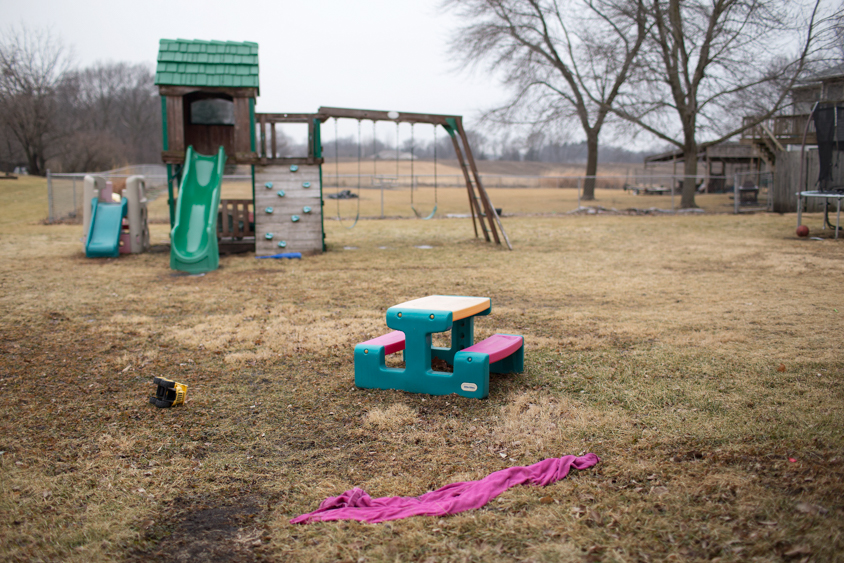
Things went well for the first year or so. And then, one summer morning in 2013, Victoria took the children to the pediatrician’s office for their son, Jamie’s, three-year checkup. During the appointment, Victoria casually mentioned that Izzy, then 20 months old, wasn’t walking yet. “When should we be worried?” she asked the pediatrician.
“Now,” the pediatrician replied. “We should be worried now.”
The pediatrician referred Izzy to Iowa’s state-funded early intervention program, called Early ACCESS, for testing. And that, Victoria says, is when their world turned upside down. The evaluation revealed obvious missed milestones: Izzy’s attempts at crawling had alternated between tummy shuffling and a ‘bear’ walk on hands and toes. It also uncovered a long list of other issues the family had overlooked: Izzy had few words, which was unusual for a toddler her age; she seldom made full eye contact; her legs and arms were constantly in motion; she showed only a fleeting interest in other people.
A therapist suggested the family make the two-hour drive to the University of Iowa in Iowa City, the nearest place to offer a rigorous autism evaluation. “But we didn’t want to go to the University of Iowa for a diagnostic eval. We didn’t want her to have a label; we just wanted to work really hard and help her catch up,” Victoria says. If they pushed hard enough, they thought, Izzy might overcome the problems. “We’re both fixers; we just wanted to fix this,” Victoria says.
That required some improvisation. The Early ACCESS program collaborates with local schools to deliver physical, occupational or speech therapy to qualifying children at no cost. And it agreed to send speech and occupational therapists once a week to Izzy’s daycare. But none of that helped enough. By the time Izzy turned 3, she rarely spoke a meaningful string of words, and her tantrums left a trail of turmoil in their wake. Her parents felt increasing pressure to address her behavior. Victoria and Shane soon realized the diagnostic evaluation might be their best hope for helping Izzy.
In February 2015, the family climbed into Shane’s silver minivan hours before sunrise and drove due east, past 150 miles of cornfields, to the clinic in Iowa City. Autism evaluations can take up to three days, but clinicians in Iowa and other states with large rural populations, including Missouri and Tennessee, sometimes condense the assessment into a single day to help families that come from afar. After a full day of testing and driving, exhausted but with an autism diagnosis in hand, Izzy’s family arrived back at their darkened driveway in Madrid. The diagnosis unlocked much-needed resources: insurance coverage for private speech therapy in a town 45 minutes away, and a full-time aide at school. Although the aide isn’t formally trained, she provides an extra pair of hands at LilyPad that can steer Izzy to a corner of the classroom when she melts down or chase after her when she bolts. So far, the aide has had little luck in stopping Izzy’s tantrums, which inevitably derail the classroom order and frustrate the teachers and other parents.
Although getting a diagnosis has helped, it does not change one brutal fact of geography: People in the small town have little experience with autism. Fellow church-goers invite the family to prayer services, soccer games and Sunday dinners. And Victoria says she likes those aspects of small-town life — seeing familiar faces in the grocery store, knowing that she can call on neighbors for support if she needs it. But most of the neighbors seem less familiar with the condition than people might be in a city. Izzy’s erratic behavior has left the family feeling emotionally disconnected from their community.
One Sunday after church, the family’s pastor pulled Victoria aside and said he’d like her and Shane to make more of an effort to engage with the church community. It seems that the couple had declined one too many dinner invitations from other members of the congregation and the would-be hosts had felt slighted. But Victoria says she dreads trying to socialize while supervising Izzy in an unfamiliar home. She says she sometimes dreams of moving someplace where there are more services for Izzy, and where she might meet other families coping with a similar situation. But every time she brings up the possibility, Shane shuts it down.
“Shane wants to stay in Madrid because everyone here knows Izzy; she knows more people than we do,” Victoria says. “If she escaped and was out walking by herself, someone would stop and get her. And so he wins.”
LilyPad is the only school for children Izzy’s age in Madrid. And until a few months ago, Izzy was the only one with an individualized education plan, a legal document designed to make sure the school tries to accommodate her needs. That’s not going so well. The speech therapist mandated by Izzy’s treatment program stopped making visits to her daycare early last year. By the time a new therapist came on board a few months later, Izzy had lost the words she once knew.
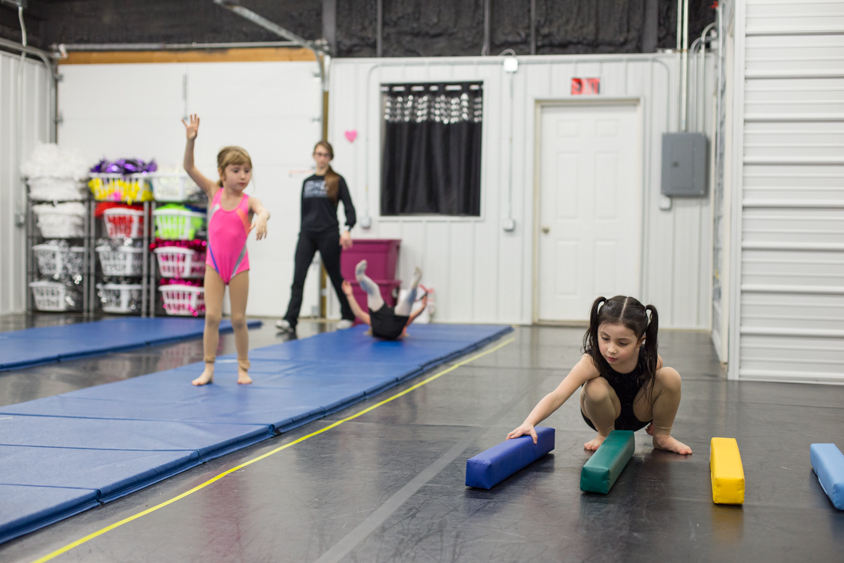
Unfortunately, these sorts of disruptions in therapy aren’t unusual, says Stephen Kanne, executive director of the Thompson Center for Autism and Neurodevelopmental Disorders at the University of Missouri in Columbia. “It’s easy to say to the schools that they are legally responsible for providing these services, but sometimes it’s just not possible if you live in a rural area with a low population and there’s no personnel to provide the service,” Kanne says.
To make sure Izzy has help, her parents decided she needs private therapy as well. The closest private provider, ChildServe, is 25 miles away and had a waiting list six months long, but it was Izzy’s only option. Once they were off the waiting list, Victoria began leaving work early each Tuesday afternoon, driving 40 minutes home to pick up Izzy from the daycare she attends before and after preschool, then another 40 minutes to Ames, where Izzy has a 30-minute speech therapy session. The trip home can take up to an hour; at 5 p.m., the highway is packed with long-distance commuters and an occasional tractor backing up the right lane.
Autism researchers who work with rural communities have long debated how to bring therapies closer to families like Izzy’s. Stainbrook’s group at Vanderbilt sends a behavioral specialist to makeshift clinics positioned in remote areas of Tennessee. Sometimes a psychologist joins the clinic by teleconference. Families often drive hours to reach one of these clinics, and the autism specialists drive a fair distance, too. After the initial diagnostic evaluation, the Vanderbilt therapists make visits to the family’s home or a nearby clinic until therapists from Tennessee’s early intervention program can take over the child’s care.
That final step is important, says Kanne: “The biggest burden isn’t the initial diagnosis, it’s the follow-up care. These families go back to their community and there’s no one there to help with the day-to-day services.”
Kanne’s team collaborates with rural pediatricians on a project called ECHO Autism. The program relies on video-conferencing technology to connect autism experts with pediatricians’ offices in rural areas of Missouri, allowing the experts to weigh in on autism diagnoses and recommend treatments.
Phoning home:
O
n the sprawling medical campus of the University of Iowa, where Izzy got her diagnosis, autism researchers are working on a solution that could bring new hope to rural families grappling with autism.In 1992, a team led by David Wacker, then a professor at the University of Iowa Children’s Hospital, piloted a program that sent ABA therapists to the homes of children diagnosed with autism. Some families lived as far as 200 miles away. Rather than working directly with the children, the therapists taught the child’s caregivers to use principles of ABA to stave off difficult behaviors in daily life. But it wasn’t sustainable to send therapists out on long treks across the state. In 2009, Wacker teamed up with his colleague Scott Lindgren to deliver the training through interactive video conferencing, known as telehealth.
At first, parents had to drive to a local clinic to join the video call. But in 2011, the researchers began using Skype to connect with families in their homes. “We’re trying to train parents to be like the therapists, or at least to have certain skills when they work with their kids,” says Lindgren, professor of pediatrics.
Over the next four years, the researchers tested this approach in 30 children ranging in age from 18 months to 6 years. All of the children had autism and had several extreme behavioral incidents a day. Their goal was to see whether lessons delivered through telehealth can improve behavior as much as an in-person visit to the clinic would.
The results, published last year in Pediatrics, suggest the approach lowers aggression, defiance and other challenging behaviors in children with autism by more than 90 percent. The researchers assessed the participants in person before the study and found that some of the children acted out for about three hours each day. At the end of the trial, they assessed the children again. “If you look at those same kids at the end of treatment, they’re now only having that challenging behavior three minutes per day,” Lindgren says.
In 2015, Lindgren and his team began performing the first large trial of this approach in children with autism and extreme behavioral issues. Among their goals is to assess whether they can rely on a clinician’s overall assessment of the child’s behaviors during the session, rather than coding the video footage every six seconds to flag certain movements.
Izzy was the first to enroll, followed by others from Iowa, Georgia and Texas. Victoria wasn’t sure the trial would help, but she was ready to try anything.
On a Thursday afternoon in September 2015, Shane carried the family’s laptop into Izzy’s bedroom and logged in to the video-conferencing site Vidyo. Victoria and Izzy crowded into the room and sat with Shane on the bed. On the other end of the call, clinical psychologist Matthew O’Brien entered a gray cubicle at the University of Iowa Stead Family Children’s Hospital. O’Brien sat down at a desktop computer and dialed in to the meeting.
The therapy has two phases, all done through Vidyo. First, clinicians put the parent-child pair in various situations to see when the problem behavior crops up. Some children act out to escape chores, whereas others become disruptive to attract a parent’s attention. Some have tantrums when they don’t get something they want, and a few show ‘automatic’ movements or outbursts that serve no obvious purpose.
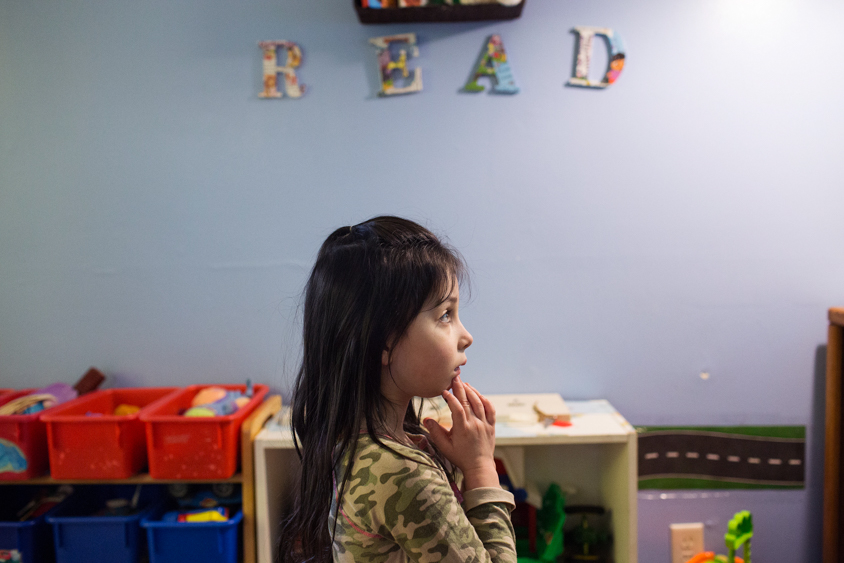
The researchers ask the parent to sit and silently read a magazine for five minutes to see whether the child acts out when ignored. Or they may direct the parent to withhold a special toy to see if that sparks a tantrum. Once they identify what triggers the child’s behavior, they coach the parents and child to replace the dynamic with a positive interaction. For example, they might teach a nonverbal child who becomes disruptive when he wants to escape an unpleasant situation to press a switch that plays a recorded voice saying, “I want a break” or “I need help.” Izzy acts out when she wants something but either can’t find the words to ask for it or isn’t allowed to have it. The researchers taught her parents to reward her with ‘tickle time’ when she uses appropriate words to ask for what she wants.
When O’Brien first started this experiment, he wasn’t sure it would work. “I was a little uneasy about the fact that I couldn’t be there to physically intervene if things were to become too intense,” he recalls. He often models interactions between parent and child with families in the clinic, but he worried that he wouldn’t be able to do that via Vidyo. “On the other hand, it was exciting to be working right in Izzy’s home, in her natural environment, as opposed to the clinic setting,” he says.
He need not have worried. That first hour-long video session with Izzy’s family, and every Thursday for the next three months, felt remarkably similar to clinic appointments, O’Brien says. By the end of the trial, the family knew the drill. Izzy learned to ask for something and expect a positive reinforcement. Victoria and Shane knew the tantrum would pass soon, which alleviated their anxiety and boosted confidence. When the family stuck to this drill, Izzy’s tantrums lasted a fraction of the time they used to. The results were empowering, Victoria says.
Apart from the convenience for the families, the therapy is considerably less expensive than in-person visits: The total cost per child is around $2,100 for three months, compared with the $6,000 cost of sending a therapist to the child’s home. The researchers plan to study around 100 children in all. Once the trial is complete, they hope to expand the therapy beyond the trial.
Encouraging findings also emerged last year from a telehealth trial conducted by researchers at Michigan State University in East Lansing. That trial also aimed to train caregivers to incorporate ABA principles into parenting, but it focused on teaching parents how to communicate with their children, rather than on correcting the children’s behavior. A total of 28 parents completed a weekly online lesson, and half of them also received 30-minute video-conferencing sessions with therapists twice a week for three months. By the end of the program, the parents reported that they saw improvements in their children’s speech and felt better equipped to shut down tantrums even if they didn’t get the extra therapy session. However, the ones who did receive it reported an even greater sense of mastery. (The researchers did not account for biases such as the placebo effect.) Other teams have coached parents — using everything from video tutorials to in-person classes — to engage their children in social interplay at home.
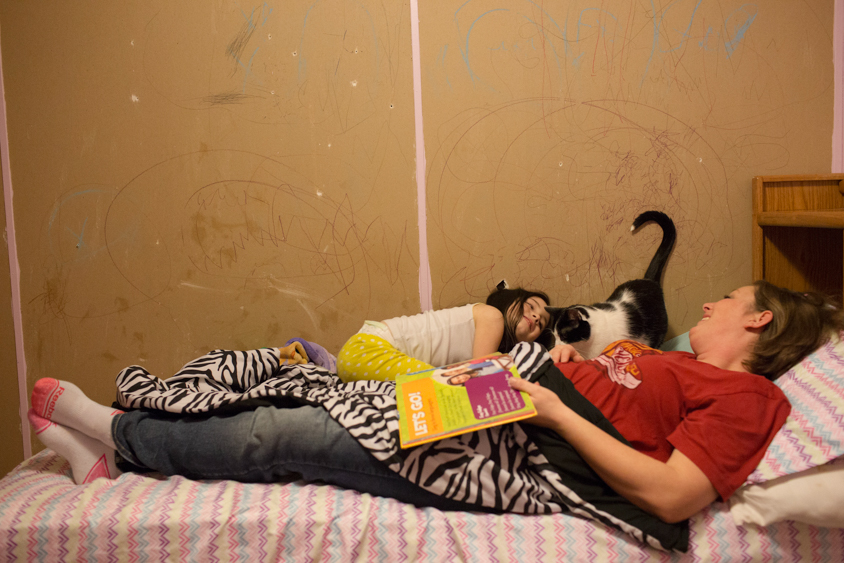
So far, however, many of these studies have been too small, and their methods too variable, to indicate whether parents can deliver the services reliably enough to improve a child’s behavior in the long term. For example, in 2014, a team of clinicians at the University of California, Davis trained parents of 11 infants with signs of autism to administer a play-based intervention called Infant Start. By age 3, children who received the treatment had better language skills and fewer behavioral issues than those who did not receive the treatment. But the study was small and preliminary. Large, well-designed studies, such as Lindgren’s, are particularly valuable, says Sally Rogers, professor of psychiatry and lead investigator on the University of California, Davis team.
Telehealth has other practical limitations, too. The research team trained Victoria and Shane, but not Izzy’s teachers, who spend most mornings with her. Izzy spends three and a half hours each day at LilyPad — although it can seem much longer when those hours are spent screaming.
”“The farther you are from a major metropolitan city, the less likely you are to find a behavioral analyst.” Alacia Stainbrook
On the homefront:
I
t’s a Monday before dawn in September, and most of Madrid is silent and dark, except for a chorus of crickets and Victoria and Shane’s brightly lit trailer home off Route 17.Some mornings, Izzy wakes hours before the rest of her family, kneels on her bed and peels away large patches of wallpaper, revealing the brown fiberboard underneath. The fixation with paper lingers from infancy, when her daycare provider discovered that the best way to calm Izzy was to put her in a crib with a roll of newsprint and let her tear off long strips.
But this morning, Izzy sleeps soundly until Victoria’s alarm clock goes off at 4 a.m. In the back bedroom, Victoria hastily dresses for her 40-minute commute to Ames, where she works as a pathology technician at Iowa State University.
At 5:15 a.m., Victoria kneels in front of Izzy and looks into the girl’s dark brown eyes. “Mommy’s going bye bye! Can you tell Mommy, ‘Bye bye’? Can you tell Mommy, ‘I love you’?”
Izzy stares at the television, her arms stiff by her sides. Victoria hugs her anyway. The girl turns and her eyes settle on a shiny silver laptop on the coffee table. Within a few seconds, she’s pounding on the keyboard. “Eudu8ywduisawjaj,” she types, as Victoria heads out the door.
By 7 a.m., Shane has driven Izzy and Jamie a mile down the road to the home daycare. A toddler crawls over and pulls up on Izzy’s wooden chair, teetering proudly in front of Izzy’s bare feet. Izzy absentmindedly places her big toe on the toddler’s forehead and gives a firm push. The little boy falls backward onto the floor, pauses, then issues an ear-splitting shriek. Izzy sucks her thumb and stares out the window.
Telehealth sessions capture these candid moments much more often than a clinic visit would, O’Brien says. Still, clinicians can’t be everywhere, even through the lens of a video camera. They can train parents and caregivers, but all the other people involved in a child’s life — teachers, neighbors, community members — may still be woefully unprepared to help her.
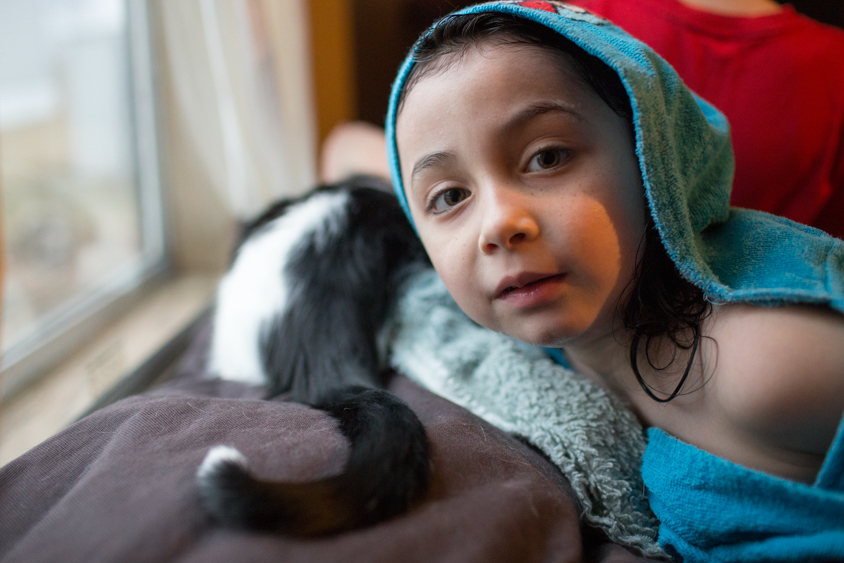
As a result, although her behavior has improved, Izzy still has difficult days. This morning, following her book-throwing episode and her morning tantrum, she can’t seem to relax. She is still shrieking when the class files out into the courtyard for recess at 11 a.m., about an hour after morning circle has ended. As a teacher tries to calm her, a 3-year-old boy runs over to announce that his friend has peed in the yard. “Oh gosh,” the teacher says, and leaves to fetch a bucket.
With the teacher distracted, Izzy picks up a brittle leaf and notices how it crumbles to dust in her hands. Enthralled, she squats on the concrete patio, crumbling leaves and watching the particles rain down. For the first time in hours, she is calm and quiet. The other children run raucously around her.
Syndication
This article was republished in The Atlantic.
Recommended reading

New organoid atlas unveils four neurodevelopmental signatures
Explore more from The Transmitter

The Transmitter’s most-read neuroscience book excerpts of 2025

Neuroscience’s leaders, legacies and rising stars of 2025

